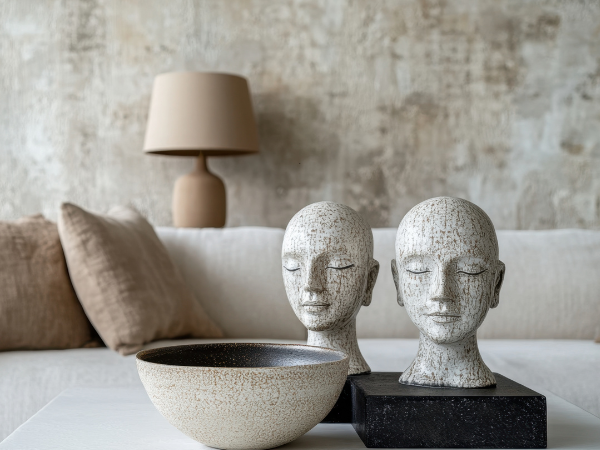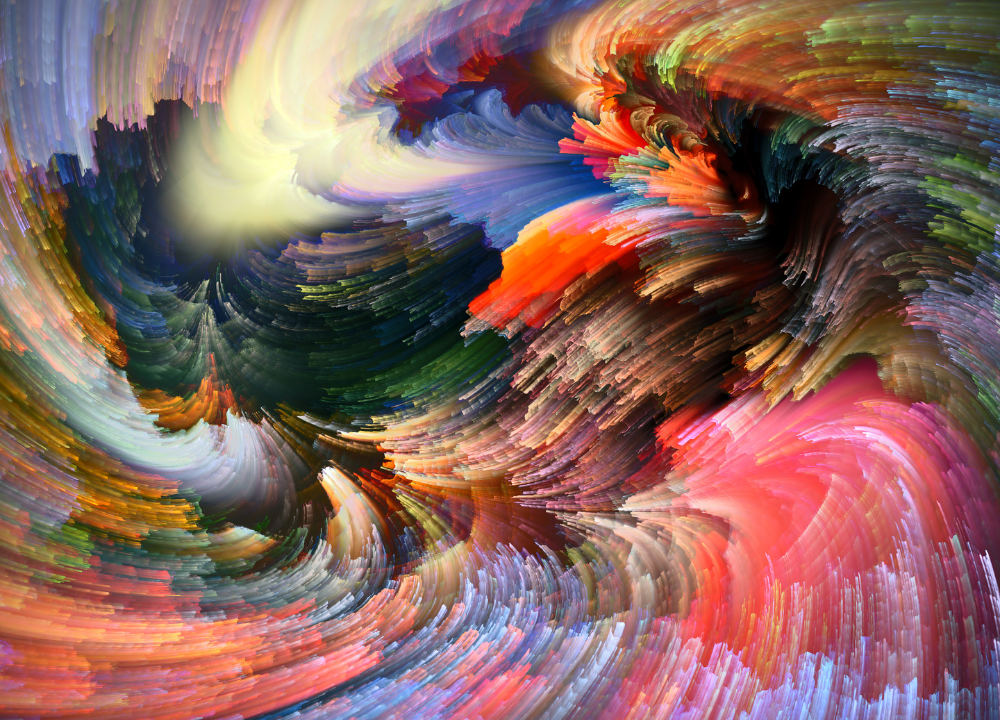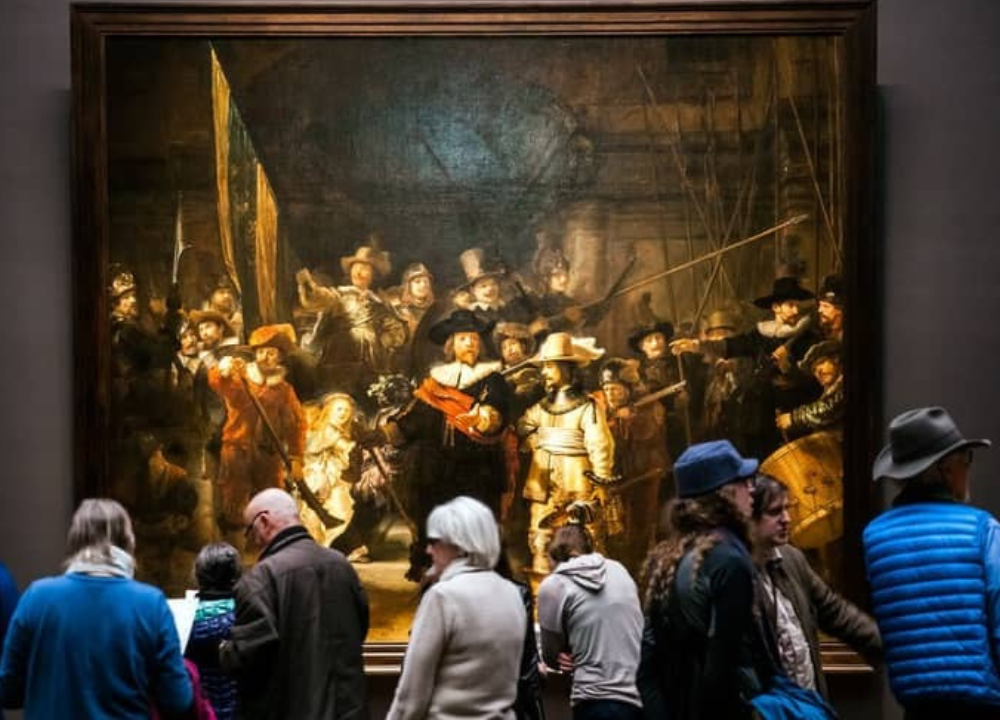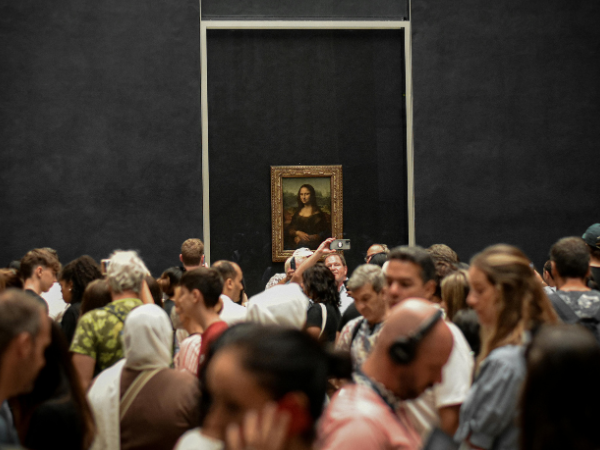This guide is made just for you—whether you’re starting from scratch or looking to sharpen your skills. You’ll find clear, hands-on tutorials that make sculpting easy and fun. By the end, you’ll see how your ideas can leap off the page and take shape in three dimensions.
Getting Started With Sketching
Starting your journey from sketch to sculpture begins with learning how to sketch well. Sketching lays the foundation for sculpting by helping you visualize shapes and forms on paper first. It builds your confidence and sharpens observation skills.
Basic Drawing Tools
Having the right tools makes sketching easier and more enjoyable. Beginners do not need expensive supplies. A few basic items work well to start:
- Pencils: Use a range of pencils from 2H (hard) to 6B (soft). Hard pencils create light lines, soft pencils make dark, thick lines.
- Eraser: A kneaded eraser helps lift pencil marks gently without damaging paper.
- Sharpener: Keep your pencils sharp for detailed work.
- Paper: Choose smooth sketch paper or a sketchbook. Avoid glossy or very thin paper.
Start with these basics. Keep your tools handy. Practice simple strokes to get used to how pencils feel on paper. This prepares you for drawing shapes and forms later.
Sketching Simple Shapes
All complex sculptures start as simple shapes on paper. Circles, squares, triangles, and ovals form the base of any figure. Practice drawing these shapes freehand to improve control and accuracy.
Try this simple exercise:
- Draw 10 circles of different sizes on a page.
- Sketch 10 squares and rectangles.
- Make 10 triangles and ovals.
Focus on smooth lines. Don’t worry about perfection. The goal is steady, confident strokes. Use light pencil pressure at first.
Once comfortable, combine shapes to create basic objects. For example, a cylinder can be made by drawing a rectangle with rounded ends. A cone looks like a triangle with a curved base.
Here are tips for sketching shapes:
- Draw lightly to allow corrections.
- Use your whole arm, not just your wrist, for smoother lines.
- Practice shapes repeatedly to build muscle memory.
- Look at real objects to see their shapes clearly.
Simple shapes are the building blocks of sculpture. Mastering them helps you break down complex forms into manageable parts.

Capturing Proportions
Proportions show the size relationship between parts of your sketch. Correct proportions make your drawing look balanced and realistic. Beginners often find this challenging but practice makes it easier.
Start by measuring objects with your pencil. Hold it at arm’s length and use it as a ruler. Compare one part’s size to another. For example, measure the height of a figure and compare it to the width of its head.
Follow these steps to capture proportions:
- Look carefully at the subject.
- Estimate relative sizes using your pencil or fingers.
- Mark key points lightly on your paper.
- Check distances between points often.
- Adjust lines to keep proportions accurate.
Use a simple grid method to help with proportion:
- Draw a grid of squares over your paper.
- Imagine the subject divided into the same grid.
- Sketch one square at a time, copying shapes inside each square.
Remember, proportions don’t need to be perfect at first. The goal is to train your eye and hand. With time, you’ll sketch balanced forms that guide your sculptures well.
Turning Sketches Into 3d Models
Turning sketches into 3D models is an exciting step in the sculpting process. It transforms flat drawings into tangible objects you can hold and shape. This phase bridges imagination and reality, giving life to your creative ideas.
Choosing Sculpting Materials
Selecting the proper sculpting material is key to a successful project. Different materials offer unique qualities, such as texture, flexibility, and drying time. Beginners should start with easy-to-use materials that allow corrections and experimentation.
- Clay: Soft, moldable, and widely used. Ideal for beginners and detailed work.
- Polymer Clay: Hardens when baked. Good for small sculptures and fine details.
- Plaster: Sets quickly and is good for casting but less flexible.
- Wax: Smooth texture, useful for precise shapes and later casting.
- Paper Clay: Lightweight and easy to shape; dries hard.
Choose a material that matches your project size, detail level, and drying preferences. Experimenting with a few types helps find what feels right.
Translating Lines To Volume
Sketches are two-dimensional, but sculptures exist in three dimensions. Turning lines into volume requires seeing shapes as forms with depth, height, and width. This skill grows with practice and careful observation.
Start by identifying the main shapes in your sketch. Break down complex figures into simple forms like spheres, cylinders, and cubes. These basic shapes help build the volume of your sculpture step by step.
- Analyze Contours: Look at the outline and curves. Imagine how they wrap around a 3D form.
- Use Cross-Sections: Visualize slices through the object to understand thickness and depth.
- Think in Layers: Build the sculpture from the inside out, adding volume gradually.
Drawing multiple views of your sketch—front, side, and top—can aid in understanding the object’s full shape. This method helps avoid mistakes and creates a balanced sculpture.
Remember, volume is about space. Your goal is to fill the space your sketch suggests, giving it physical presence. Practice by making simple 3D shapes from flat sketches to develop this ability.
Building A Wireframe Armature
An armature is the skeleton of your sculpture. It supports the clay or other materials and keeps the form stable. Building a good wireframe armature saves time and prevents cracks or breaks in the final piece.
Use flexible yet strong wire to create the armature. Common materials include aluminum or steel wire. The wire should bend easily but hold its shape well.
- Sketch the Basic Shape: Draw the main parts of your sculpture to guide the armature’s shape.
- Cut Wire Pieces: Measure and cut wire sections for the body, limbs, and head.
- Assemble the Frame: Twist and connect the wire pieces to form a rough skeleton.
- Reinforce Joints: Wrap wire tightly at connection points to strengthen the armature.
- Add Bulk: Use foil or extra wire to fill large areas before adding clay.
Here is a simple checklist for building an armature:
- Wire thickness matches sculpture size
- Strong connections at joints
- Balanced weight distribution
- Flexible enough to adjust
- Lightweight to handle easily
A sturdy armature holds your sculpture’s shape and reduces material use. It allows you to work faster and create more dynamic poses. Take time to build a solid base before sculpting details.
Sculpting Techniques For Beginners
Sculpting Techniques for Beginners focus on building strong basics that guide your creative process. Learning how to shape, carve, add texture, and refine your sculpture brings your ideas to life. These skills help you turn flat drawings into three-dimensional art.
Shaping And Carving
Shaping and carving form the foundation of sculpture. Begin by choosing the right material, such as clay, wood, or foam. Use your hands and simple tools to create the basic form. Focus on rough shapes first, then gradually remove material to define the sculpture.
- Start with a block: This gives you volume to work with.
- Use tools: Carving knives, wire loops, and chisels help shape details.
- Work from large to small: Remove big chunks before carving fine parts.
Here is a simple carving workflow:
| Step | Action | Tip |
|---|---|---|
| 1 | Block out rough shape | Keep the sketch nearby as reference |
| 2 | Carve large features | Work slowly and carefully |
| 3 | Refine smaller parts | Use finer tools for detail |
Patience is key. Avoid rushing. Let the form emerge naturally by removing small amounts at a time. This prevents mistakes and keeps your sculpture balanced.
Adding Texture And Details
Texture adds life to your sculpture. Small details make your work more realistic and interesting. Use different tools and techniques to create surface variations. Texture can represent skin, fabric, hair, or any material.
- Stippling: Tap the surface with a pointed tool to create dots.
- Scratching: Use a needle or knife to add fine lines.
- Impressing: Press objects like leaves or fabric into the clay.
Tools for texture include:
| Tool | Use |
|---|---|
| Wire brush | Create rough, uneven surfaces |
| Needle tool | Draw fine lines and patterns |
| Sponges | Smooth or add subtle texture |
Start adding texture after the main shape is done but before full drying. Test textures on a scrap piece first. This helps you avoid mistakes on your main sculpture.
Smoothing And Refining
Smoothing and refining finalize your sculpture’s look. This step cleans rough areas and blends shapes. It makes the surface ready for painting or display.
Common smoothing methods include:
- Use fingers or soft tools: Gentle pressure smooths small bumps.
- Wet sponge or brush: Lightly dampen the surface to soften edges.
- Sandpaper: After drying, fine sandpaper removes rough spots.
Keep these tips in mind:
- Smooth gradually to avoid losing important details.
- Work in good light to see imperfections clearly.
- Be patient; refining takes time but improves quality.
Refining enhances the sculpture’s form and prepares it for final touches. This process gives your work a professional and polished appearance.
Working With Different Sculpting Mediums
Choosing the right medium can make the creative process smoother and more enjoyable. This section covers popular sculpting materials, their uses, and tips for beginners.
Clay Basics
Clay is the most common sculpting medium for beginners. It is soft, easy to shape, and widely available. Clay allows artists to create detailed forms and smooth surfaces. There are many types of clay, but the two main kinds are natural clayand synthetic clay.
Natural clay requires water to stay workable. It can dry and harden, either by air or firing in a kiln. Synthetic clay, like oil-based clay, stays soft and does not dry out.
- Water-based clay: Needs moisture; dries hard.
- Oil-based clay: Soft, reusable, no drying.
- Earthenware clay: Fired at low heat; brittle when dry.
- Stoneware clay: Fired at high heat; strong and durable.
Basic tools for clay sculpting:
| Tool | Use |
|---|---|
| Wire loop | Carving and shaping |
| Ribbon tool | Removing clay |
| Sponge | Smoothing surfaces |
| Needle tool | Detail work |
Keep clay moist while working to avoid cracks. Cover your sculpture with plastic to preserve it overnight. Practice simple shapes first to build confidence.
Wax And Plaster
Wax and plaster offer different sculpting experiences. Wax is soft and smooth, ideal for fine details. Plaster is hard and used for casting or creating molds. Both materials serve different purposes but can work well together.
Wax melts at low heat and stays pliable when warm. It allows easy corrections by adding or removing material. Artists often use wax for small sculptures or to create models for metal casting.
- Types of wax: Beeswax, paraffin, and microcrystalline wax.
- Tools: Heat source, carving knives, and sculpting tools.
Plaster is a powder mixed with water to form a thick paste. It hardens quickly and captures fine details well. Plaster molds can reproduce clay or wax models in solid form.
| Material | Characteristics | Common Uses |
|---|---|---|
| Wax | Soft, smooth, melts with heat | Model making, lost wax casting |
| Plaster | Hard, fast-setting, brittle | Molds, casts, sculpture bases |
Wear gloves and work in a ventilated area when handling plaster. Heat wax gently to avoid burns. Both mediums require patience and care for best results.
Using Polymer And Air-dry Clays
Polymer and air-dry clays are popular for home sculpting projects. Both do not require a kiln, making them accessible for beginners.
Polymer clay is a plastic-based material. It stays soft until baked in a home oven. Once baked, it becomes hard and durable. It comes in many colors and can be mixed for custom shades.
- Polymer clay features:
- Oven-bake hardening
- Wide color range
- Flexible when soft
Air-dry clay hardens by exposure to air. It requires no heat but must dry slowly to prevent cracking. Air-dry clay is lightweight and easy to sand or paint after drying.
- Air-dry clay features:
- No baking needed
- Lightweight
- Good for quick projects
Keep polymer clay away from direct sunlight. Store unused air-dry clay in airtight containers. Both clays offer fun, easy ways to create sculptures at home.
Finishing Touches And Presentation
Finishing touches and presentation bring your work to life and show it in the best way. These steps protect your sculpture and help others appreciate your effort. Simple acts like painting, sealing, mounting, and photographing create a strong impact.
Painting And Sealing
Painting adds color and personality to your sculpture. Choose paints that fit your material, like acrylics for clay or oils for wood. Use thin layers for smooth coverage. Let each layer dry before adding the next. This prevents smudging and uneven spots.
Sealing protects your sculpture from dust, moisture, and damage. It also keeps colors bright for longer. Common sealers include:
- Matte sealers for a natural look without shine.
- Glossy sealers for bright and shiny finishes.
- Satin sealers for a soft glow between matte and glossy.
Apply sealers with a soft brush or spray. Do this in thin layers and let each dry well.
| Step | Tips |
|---|---|
| Clean Surface | Remove dust and grease before painting. |
| Use Primer | Improves paint adhesion and color. |
| Thin Layers | Apply multiple thin coats for best results. |
| Seal Last | Protects paint and adds final finish. |
Remember:Let your sculpture dry completely between each step. This ensures a clean, polished look.
Mounting And Display Options
How you show your sculpture affects how others see it. Choose a mounting or display method that fits your sculpture’s size, weight, and style. Proper mounting keeps your piece safe and stable.
Common display options:
- Plinths or pedestals: Great for medium to large sculptures. Raise your art to eye level.
- Wall mounts: Perfect for flat or lightweight sculptures. Use secure hooks or brackets.
- Display cases: Protect delicate sculptures from dust and damage.
- Shelves and tables: Simple and easy for small sculptures.
Consider the environment too. Avoid direct sunlight or damp places. Soft lighting highlights details and textures.
Photographing Your Sculpture
Good photos help share your sculpture with others. They show details and the full form. Use natural light when possible. Avoid harsh shadows and bright spots. Soft, even light works best.
Tips for photographing sculptures:
- Choose a neutral background. Plain colors avoid distraction.
- Use different angles. Capture front, side, and close-up views.
- Keep the camera steady. Use a tripod or stable surface.
- Adjust focus. Highlight textures and fine details.
- Edit lightly. Adjust brightness and contrast, but keep the image true.
Use these settings for better results:
| Setting | Recommendation |
|---|---|
| ISO | 100-200 for less grain |
| Aperture | f/8 to f/11 for sharpness |
| White Balance | Match your light source |
| Shutter Speed | Use tripod to avoid blur |
Good photos help you build a portfolio and share your art online. They also record your progress and success.
Common Challenges And Solutions
Beginners face common problems that can slow progress or damage the work. Knowing these issues and their solutions helps keep creativity flowing. This section covers typical hurdles in sculpture making and how to handle them effectively.
Fixing Structural Issues
Structural problems happen when the sculpture lacks support or balance. This can cause parts to sag, lean, or fall apart. Beginners often struggle with making the sculpture strong enough to hold its shape.
Ways to fix structural issues:
- Use an armature: A wire or frame inside the sculpture supports the clay or material.
- Check weight distribution: Heavy parts need extra support underneath.
- Build in layers: Add material gradually, letting each layer dry or set before continuing.
- Secure joints: Blend and smooth connections between parts to avoid weak spots.
- Choose strong materials: Some clays or mediums hold shape better and resist sagging.
Here is a simple table showing common causes of structural problems and quick fixes:
| Problem | Cause | Fix |
|---|---|---|
| Collapse of limbs | Weak armature or no support | Add wire frame; reinforce joints |
| Leaning sculpture | Uneven base or weight | Widen base; balance weight |
| Cracks at joints | Poor blending or drying too fast | Score and slip; slow drying |
Fixing these issues early prevents bigger problems later. Regularly test stability by gently moving the sculpture.
Preventing Cracks And Breakage
Cracks and breaks ruin the look of a sculpture and waste time. These happen when the material dries unevenly or is too thin in some areas. Prevention is better than repair.
Tips to avoid cracks and breakage:
- Control drying speed: Dry sculptures slowly and evenly to avoid stress.
- Keep thickness consistent: Thin parts dry faster and crack more easily.
- Use proper slip: A clay-water mix called slip helps join parts firmly.
- Score surfaces: Scratch parts before joining to improve adhesion.
- Maintain humidity: Cover work with plastic to keep moisture during breaks.
Signs of drying stress include small cracks or changes in color. Fix small cracks quickly by smoothing with wet fingers or adding slip. Use a spray bottle to mist water if the sculpture dries too fast.
Below is a checklist for crack prevention:
- Dry in shade, not direct sun.
- Keep clay thickness uniform.
- Use slip and score before joining parts.
- Cover sculpture to keep moisture.
- Handle sculpture gently during work.
Reworking Mistakes
Mistakes happen. A shape may be off, or details may look wrong. Reworking lets you fix errors without starting over. Knowing how to adjust your sculpture saves time and effort.
Steps to rework mistakes:
- Assess the error: Decide if it needs small fixes or larger changes.
- Soften material: Use water or clay softener to make corrections easier.
- Remove excess material: Carefully scrape or cut away unwanted parts.
- Add clay gradually: Build up areas that need more volume.
- Blend seams: Smooth transitions between old and new clay with fingers or tools.
- Check symmetry: Measure or compare sides to keep balance.
Patience is key. Rushing can damage the sculpture further. Use tools like loop tools, spatulas, and brushes for precise work. Keep your workspace clean to avoid mixing dirt into the clay.
Here is a quick guide for common rework tasks:
| Mistake | Rework Method | Tools |
|---|---|---|
| Uneven surface | Smooth with wet sponge or brush | Sponge, brush, water |
| Wrong shape | Cut and reshape with tools | Loop tool, knife |
| Cracks | Add slip and smooth | Slip, fingers |
Reworking is part of learning. Each correction improves your skills and the final sculpture.




